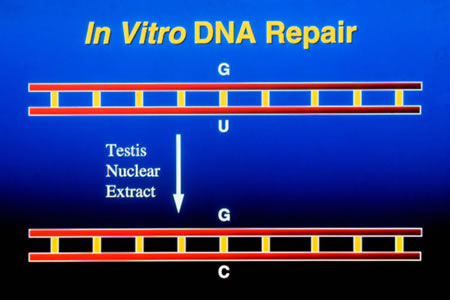DNA Repair & Nucleic Acid Enzymology Group
This sub-group’s research concentrates on biological studies of DNA repair processes in mammalian cells. More specifically, the major interest is to define the roles of various protein components involved in the base excision repair (BER) machinery, and to study the interconnections among these components. To accomplish these goals, biochemical, structural, and biological studies have been integrated with experiments using DNA polymerase β (Pol β) knockout mouse fibroblasts. Understanding the role of BER, and in particular the repair polymerase Pol β, in cellular protection against genotoxic stress has important implications for accomplishing the mission of the NIEHS-NIH. When DNA base lesions are not efficiently repaired, cells undergo mutagenesis, and in some cases cell death. Depending on the tissue in question, these responses can have dire consequences for health.
Utilizing biochemical, structural, and biological approaches, the long-term objectives of the group’s research are:
- To define the fundamental reaction of BER in higher eukaryotes
- To understand the mechanism of individual steps in the "single-nucleotide" and "long-patch" BER sub-pathways, especially regulation of the strand displacement process in long-patch BER
- To identify new partners of Pol β and how these new partners influence the efficiency of Pol β-dependent repair pathways through protein-protein and protein-DNA interactions
- To elucidate the excision mechanism of dRP lyase and AP lyase reactions of Pol β from structural and functional perspectives
Researchers: Rajendra Prasad, Esther Hou
Slides








